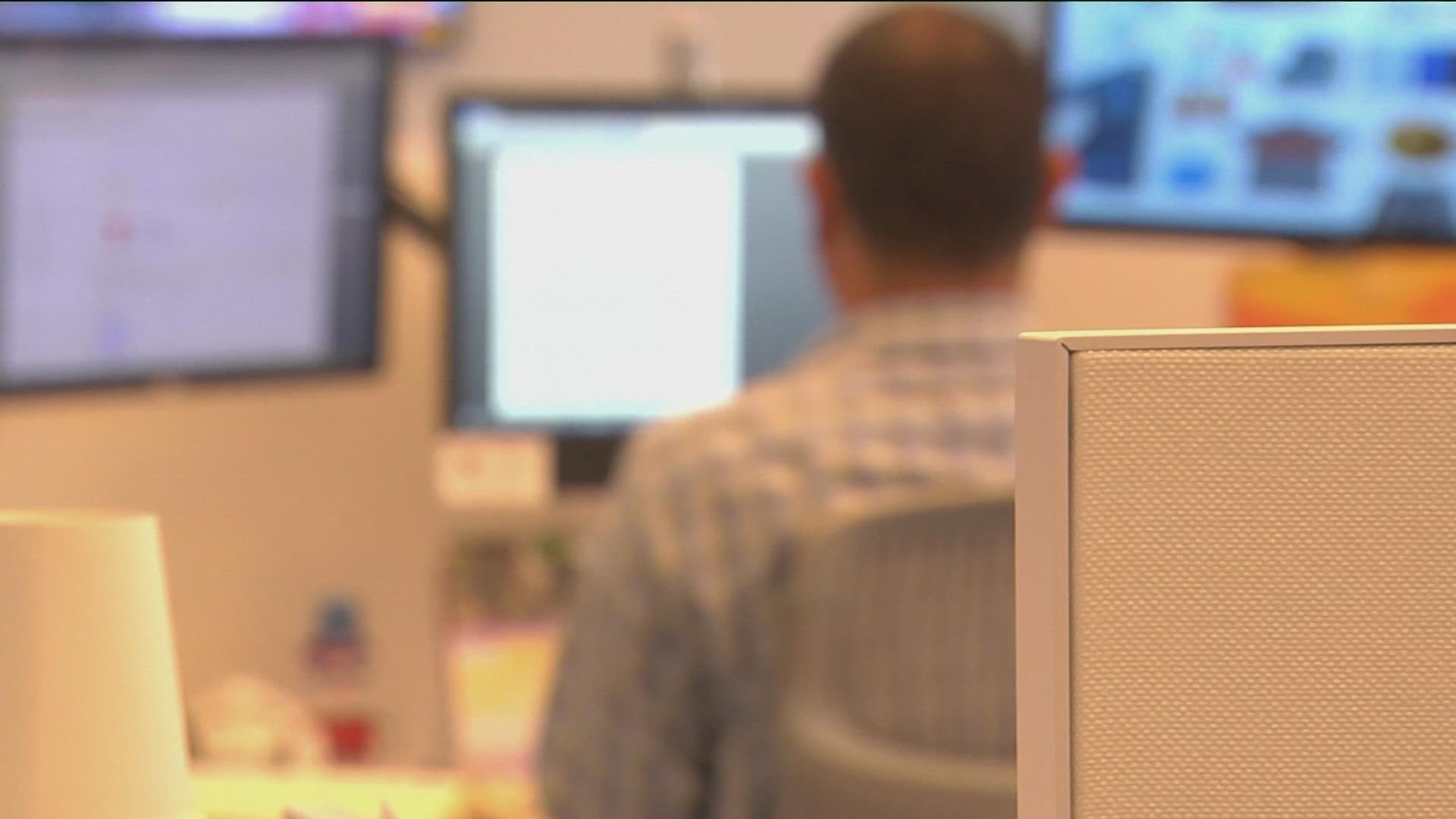BOISE, Idaho — Many employers and customers are asking a big question, “Where did all the workers go?”
Over the summer, there were well over two job openings for every job seeker in Idaho. That number's only gone down a little. A researcher I talked to said they haven't seen numbers like that in the past 50 years... and maybe ever, since the data doesn't go much further back.
Here are even more staggering statistics. Idaho's unemployment is low (2.8% in September) and has come down over the past three years from 3% three years ago. Unemployment tracks the number of people looking for a job. The labor force participation rate tracks the amount of people working or looking for work. That's dropped almost two percentage points in the past three years, from 64.5% to 62.7%, even as the unemployment rate has gone down. Craig Shaul, research supervisor with the Idaho Department of Labor, said we'd have 27,700 more workers in the labor force, if we were at 2019's rate.
That means there are more than 27,000 Idahoans who left the workforce because they don't need to work, which is helping to drive the workforce shortage across all industries. Who are those 27,000 people? Where did they go? Shaul says, it's not just a bunch of people who don't want to work. He says, not all of them, but the largest portion of them are people in their late 50's and early 60's who retired during the pandemic or later: Baby Boomers who were faced with their own mortality during the pandemic and thanks to the stimulus package and great equity in homes, could afford to stop working.
"So, all those factors, and with the pandemic, kind of making it like ‘You only live once, might was well try, might as well go.’ You saw this kind of acceleration retirements,” Shaul said. “I just did a back of a napkin calculation. And really what that did is it accelerated our retirements by about five years. And so those aren't retirements that we weren't expecting to happen someday. They just were accelerated by about five years."
Again, that's a rough estimate, but we are about five years behind on injecting workers into the labor force because of all the early retirements. There is no quick fix for that. Again, many of those workers are retired and not coming back.
The immediate changes that can be made are on the employer side. Some industries are sticking with more remote work, which has helped them attract more of the workers who are out there. Also, companies are embracing more automation. Essentially, the thing workers were worried about for decades, robots taking their jobs, now needs to happen, except it's more like robots filling empty positions.
"It's like, we were worried that that was going to replace workers. And now it's kind of flipped over to where we need them. Like, ‘Where are those robots?’,” said Shaul. “The same things for consumers too, where it's like, 'They're supposed to be here by now already.'"
Shaul said that's the big thing to watch going forward, the innovation from employers, because that's how the economy will expand and hopefully overcome this workforce shortage.
This is part 4 of a series by Justin Corr about the workforce shortage. Previous stories are linked below:
Watch more Local News:
See the latest news from around the Treasure Valley and the Gem State in our YouTube playlist:

